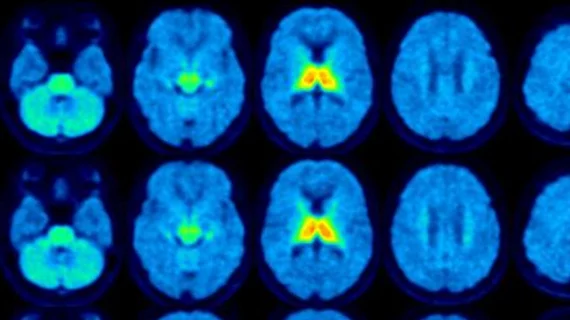Obesity linked to altered brain connectivity on PET/MRI exams
This week at the Society of Nuclear Medicine and Molecular Imaging 2023 Annual Meeting, new research explains how the brains of individuals with obesity differ from those who maintain a healthy weight.
The molecular imaging study utilized PET/MRI with 18F-flubatine to visualize how neuroreceptors in the brain respond to food cues in obese participants. Through this, researchers discovered that obese participants displayed a higher total distribution volume of 18F-flubatine while viewing pictures of food in comparison to a control group of average-weight individuals.
“The brain’s cholinergic system is a unique area of interest when it comes to studying obesity,” explained Swen Hesse, MD, clinical scientist and professor in the Department of Nuclear Medicine at the University of Leipzig in Germany. “Cholinergic changes in the brain’s reward and attentional networks seem to play an important role in how people decide what foods are most desirable, or salient.”
For the study, experts had the two groups (obese and control) undergo two PET/MRI exams—once in a resting state and then again while looking at pictures of high-calorie foods. The total distribution volume of 18F-flubatine did not differ significantly between the two groups during resting state imaging but was notably higher in the obese group when they were presented with images of food. This was especially true among those with higher Three-Factor Eating Questionnaire scores.
Those individuals also showed stronger connectivity in the salience network, while healthy controls displayed superior connections in their dorsal attention network when presented with food images. A correlation between disinhibition and the nucleus accumbens also was observed in individuals with obesity.
Experts involved in the study suggested that these findings could present a pathway to targeted interventions in the obese population.
“We anticipate that the results of our study will pave the way for novel drug treatments and behavioral interventions to effectively combat obesity worldwide,” said Osama Sabri, MD, PhD, professor, director and chairman of the Department of Nuclear Medicine at the University of Leipzig.
Sabri later added that PET/MRI technology could be a promising tool in identifying and stratifying individuals who would respond best to certain treatments catered to obesity.
To learn more, click here.

